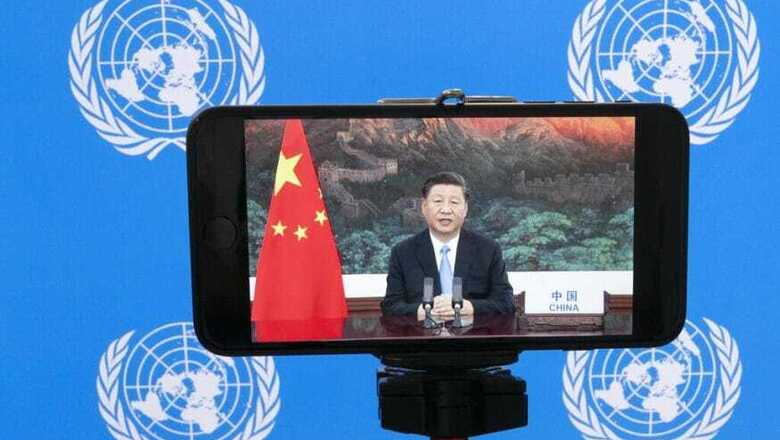
views
“Our common house is in disorder,” said French President Emmanuel Macron, describing the troubled state of the United Nations General Assembly as it prepares for a second week of mostly virtual meetings and speeches starting Tuesday.
For the first time the speeches of presidents and prime ministers are being delivered on videos, often recorded days in advance.
It’s rather like watching a movie in an empty theater, as New York Times journalist Rick Gladstone put it.
The human dimension of the global conclave, along with its more or less secretive bilateral tete-a-tetes, has been missing this year as the coronavirus pandemic plays havoc with diplomatic niceties.
Without closed door diplomacy there is no diplomacy, an ambassador from a Security Council member country said, speaking on condition of anonymity.
The virtual approach however has made it far easier for world leaders to bring their message to New York.
The General Assembly will hear or has heard from more than 160 of the heads of state or government representing the UN’s 193 member countries. These include some whose appearances before the world body are rare, such as President Vladimir Putin of Russia, China’s Xi Jinping, and even Pope Francis, unseen at such events since 2015.
Diplomats expect little progress between US President Donald Trump’s administration — no friend of the UN and a constant critic of China — and much of the rest of the world as it pleads for unity in confronting the crippling Covid-19 pandemic.
In the middle and struggling to be heard is UN Secretary-General Antonio Guterres, who seems more like the capitan the sinking “SS Multilateralism” as he shows up in the nearly deserted UN headquarters.
“This pandemic is a wake-up call for even more catastrophic challenges that may arise, starting with the climate crisis,” Guterres warned on Thursday. “If we meet these with the same disunity and disarray we have seen this year,” he said, “I fear the worst.”
Russia has been cool to the virtual approach, even threatening not to recognize leaders’ videos as official UN documents.
It demanded that every leader send a diplomat to introduce their video in the cavernous General Assembly amphitheater, adding a dated, bureaucratic overlay to modern communications.
The videos often show the world leaders speaking from majestic offices, verdant gardens or before barren walls, usually flanked by their national flags.
This was the case of Fayez al-Sarraj, who heads Libya’s UN-recognized government but has promised to step down next month, and Venezuela’s Nicolas Maduro, whose presidency is contested by more than 50 countries.
Following a recent coup it’s still unclear who will speak for Mali. Syria’s Bashar al-Assad, widely despised in the West, was absent, while North Korea’s Kim Jong Un chose a diplomat to represent him.
UN officials protectively imposed some parameters for the video presentations: they must arrive at least four days ahead of schedule and they cannot exceed 15 minutes.
At seven minutes, Trump’s video met the time limit, but it arrived just one day early. Macron’s video ran 50 minutes long.
Unlike previous years the annual session adjourned for two days — Sunday and Monday — instead of the usual one, to allow for what one diplomat called a “major cleaning and disinfecting” of the amphitheater.
Several high-level videoconferences are scheduled starting Tuesday on topics that include the novel coronavirus pandemic, biodiversity, women, nuclear arms and the conflicts in the Central African Republic and Libya.
More videos from world leaders are also scheduled.
What was meant to be a one-day virtual celebration of the organization’s 75th anniversary September 21 had to be interrupted leaders failed to respect the three-minute limit for their video remarks.
The pronouncements of 55 countries — including Brazil, Britain and Iran — have yet to be heard.
That means the words of global leaders are being stretched out over an unprecedented two weeks.













Comments
0 comment